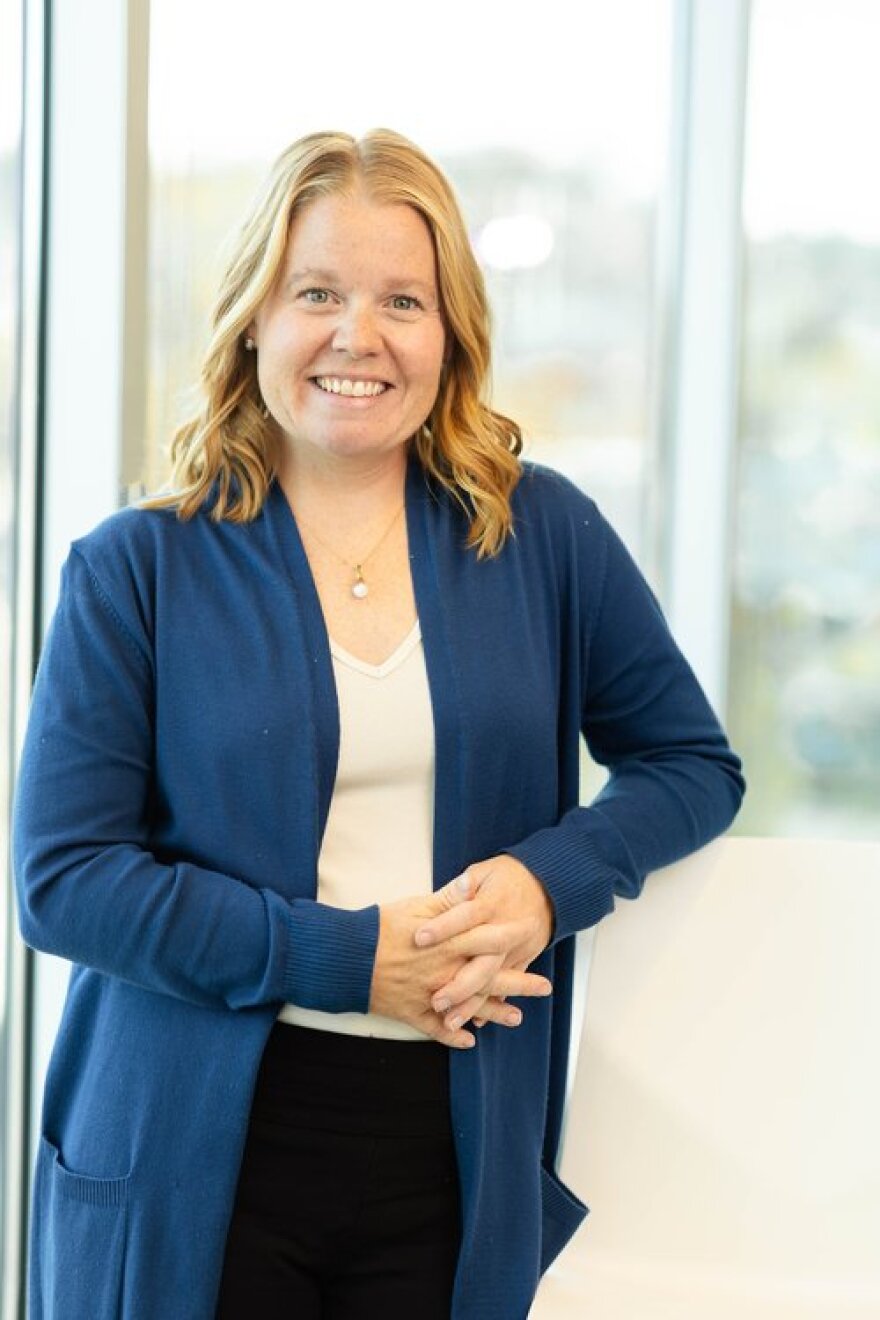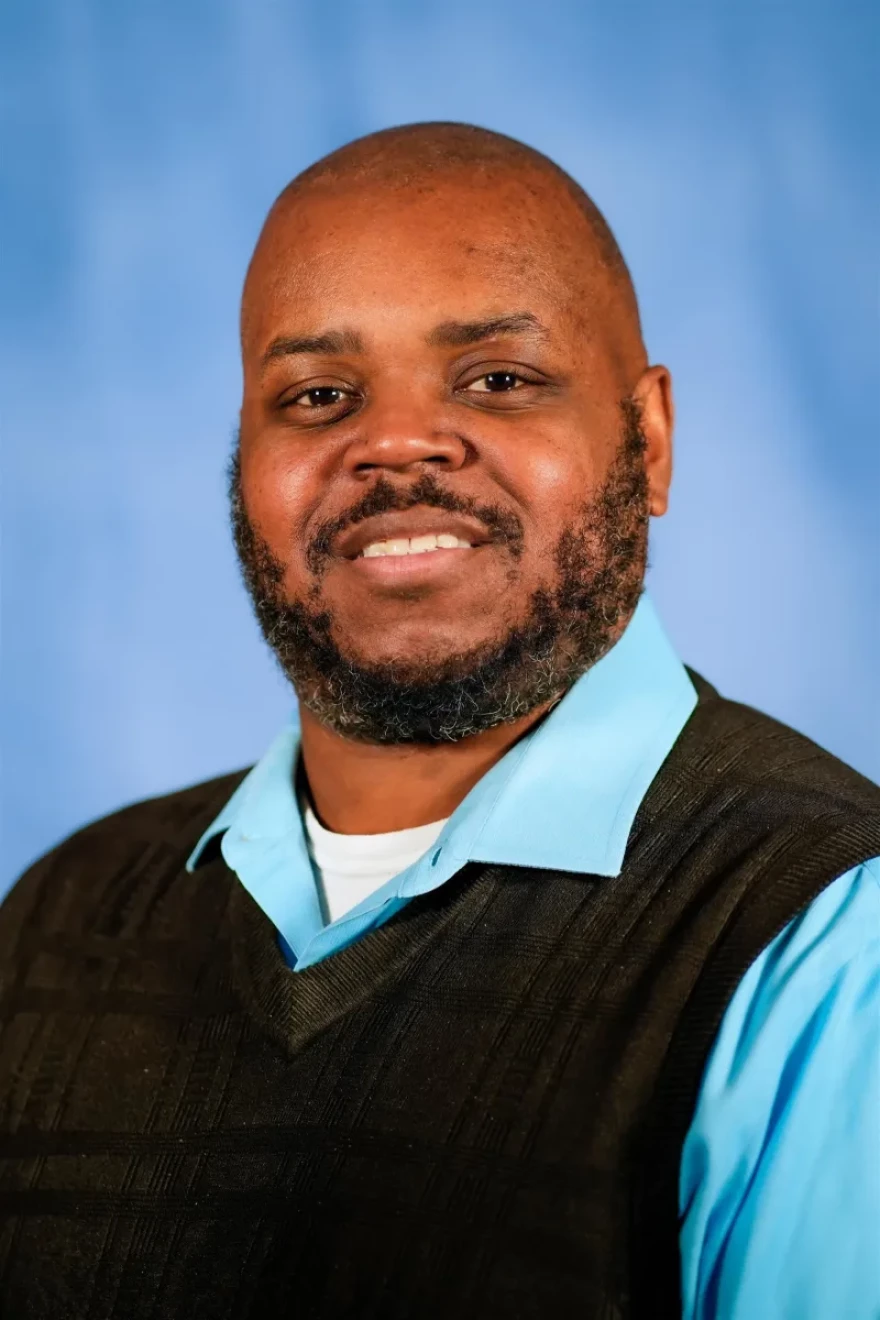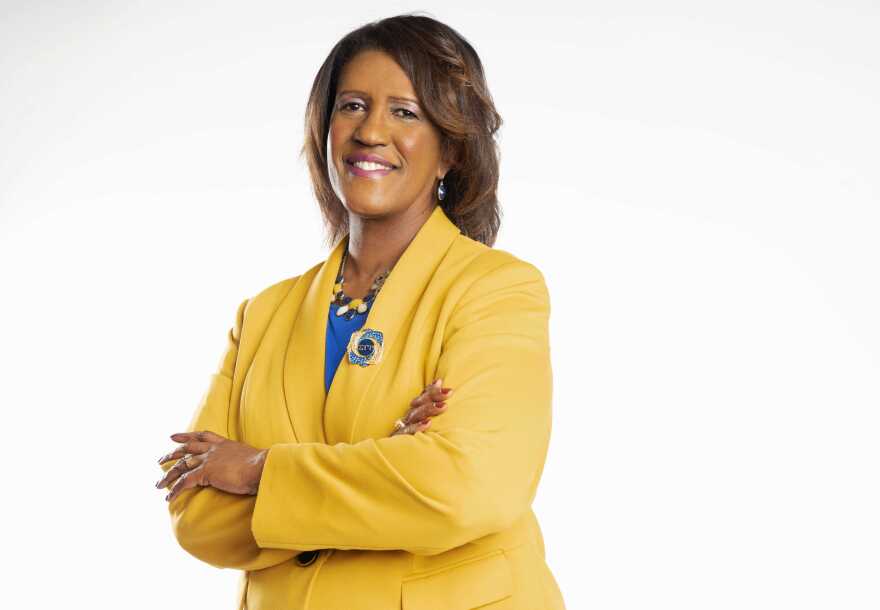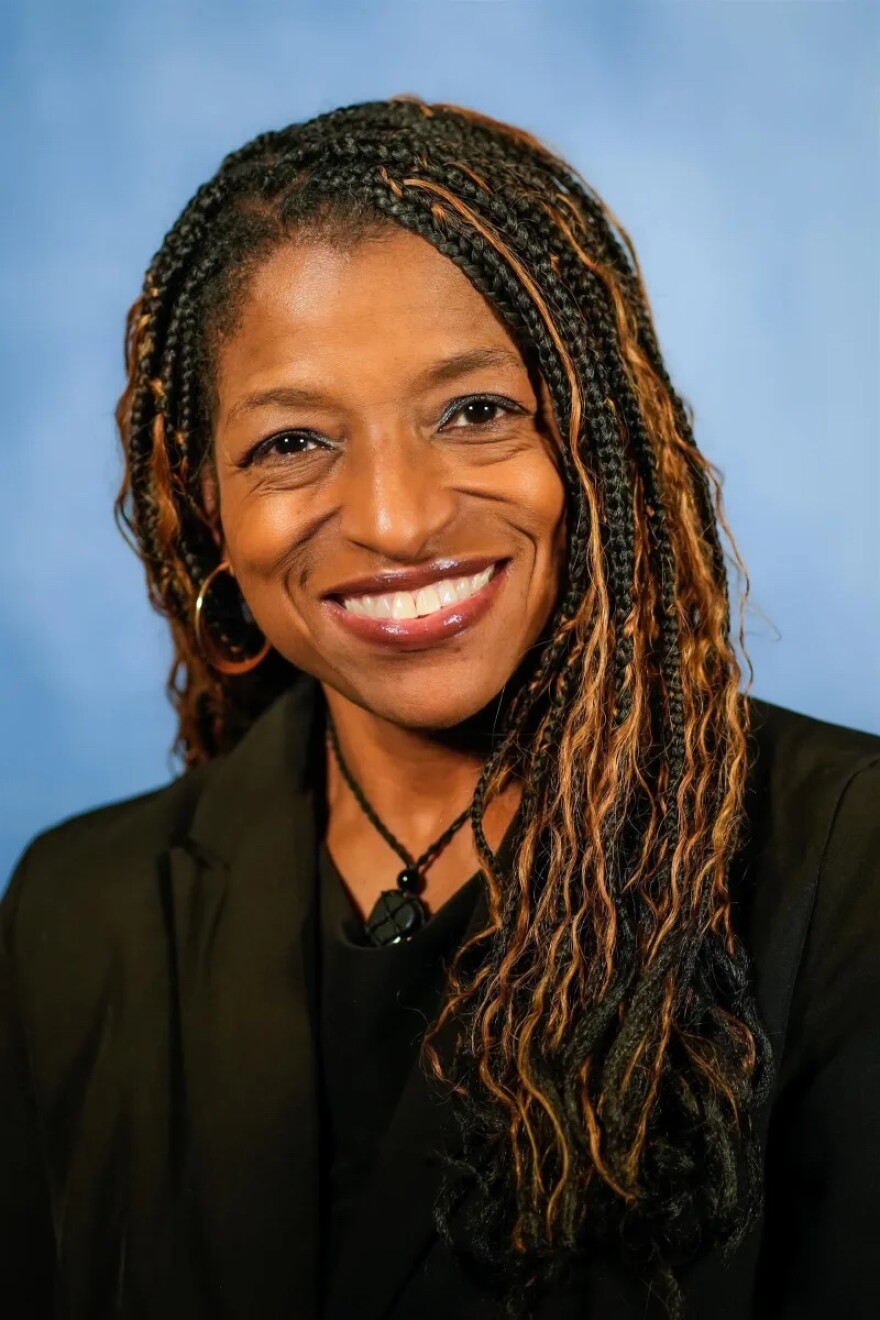Five candidates are running for four seats on the Cincinnati Public Schools Board of Education. Three incumbents — current Board President Kareem Moffett, and Board members Brandon Craig and Jim Crosset — will seek to retain their seats. Challengers Kari Armbruster and Marcia Futel are aiming to become members for the first time. Futel has run for a seat on the CPS Board twice before, falling short both times in 2013 and 2017.
Mary Wineberg, a member since 2022 and a 2008 Olympic Gold medalist, announced in May she would not seek reelection.
The past 12 months have been eventful at Ohio's second-largest school district. Since Nov. 2024, the CPS Board of Education has appointed a new superintendent, approved a massive district-wide restructuring plan, passed an operating budget with millions of dollars in cost reductions, and challenged the Trump administration on issues related to DEI in schools and federal education funding.
WVXU reached out to all of the candidates on the ballot and asked each to answer the same three questions. Responses are presented alphabetically below. Answers have only been edited for style and clarity.
Kari Armbruster

Chronic absenteeism has been a persistent issue for CPS. What can the school board do to move the needle on this issue and get students in the classroom?
First, we need to reach out to the students and their caregivers to understand what is the root cause of the issue. We can’t solve a problem until we understand it fully. Second, we must build support systems that address the main drivers of absenteeism: transportation, health, and student engagement. We need to ensure our students are able to safely arrive at school on time every day. We need to provide access to primary health care for our students so they can stay healthy and attend class. We need to provide a classroom environment that engages our students and keeps them wanting to learn.
Budget cuts earlier this year resulted in the loss of many jobs within the district. What would you advocate for as a school board member to avoid similar cuts in the years to come?
Unfortunately, our district is in a tight financial position. We need to do whatever we can to preserve the school experience for our students. The administration made a difficult decision to cut positions, and it is not one anyone took lightly. Moving forward, I would continue to advocate for additional resources for the district to avoid cuts of any kind. We need to think creatively about how we allocate funds and ensure it is aligned directly with student outcomes and priorities. We also need to think creatively about how we bring in funding, as it is becoming increasingly difficult to rely on state and federal funding.
Are there areas where you think the district isn’t doing enough for students, teachers, and/or the school community?
I think our district has many pockets of success. I believe we have wonderful teachers and administrators who care deeply for the students. I also would not be running for school board if I did not think we could do better. Our student outcomes across the board are not where they need to be. Cincinnati is the top urban district in Ohio, and we should lead the way in finding a new way to engage our students, community, and staff. The district can offer more than our suburban counterparts because of our size, location, and diversity. We need to tap into the corporate interest, labor organizations, social service agencies, and the amazing people who live and work in our district to get them to invest in our schools. Invest their time, money, and thoughts. We need strong leadership, engaging curriculum, and an inspiring vision.
Brandon Craig (incumbent)

Chronic absenteeism has been a persistent issue for CPS. What can the school board do to move the needle on this issue and get students in the classroom?
Chronic absenteeism is a complicated issue. Before discussing the steps CPS can and are taking to address it, it is important to make sure we are operating with the same definition of chronic absenteeism. A student is considered "chronically absent" if they have missed at least 10% of the required school year hours. In terms of days, a student is considered chronically absent if they have missed approximately 18 days for the entire school year. There are no exceptions for medical days or excused absences. I provide that definition because I think it is important that we make sure that our parents and students know the definition so that they can operate with a clearer picture. Additionally, we have to continue the efforts we made in the past to provide our multi language learner families with guidance in their native language. Doing so in the past caused our numbers to substantially decrease in MLL households. We currently have school social workers and counselors who are working hard to ensure that we are communicating with the parents prior to their student reaching the chronically absenteeism level. They will continue to make the biggest difference. But the final suggestion I would make is that we have to continue improving the quality of the opportunities that students have access to and focus on giving the students a sense of self-value through education. We will then give students more value in themselves and their education. We know that students are more likely to attend school if they find it more valuable personally, and when students attend school, they are more likely to do better and graduate.
Budget cuts earlier this year resulted in the loss of many jobs within the district. What would you advocate for as a school board member to avoid similar cuts in the years to come?
Although several budgets were cut and positions were lost, the Board made a considerable effort not to lose people when positions were cut. In the past, the Board made great efforts to not lose staff during COVID, and over the last few years, coming out of COVID. But last year, the Board was faced with a challenging decision on how to address the budget shortfall because 70+% of the budget is salary and benefits. Going forward, getting our budget done on time will help us minimize the need to make sudden changes to positions. However, the only way to truly avoid having to make cuts each year is to get a fully funded state formula that does not take funding from urban public schools like CPS and give it to private schools through vouchers. Absent that occurring, we have an obligation to ensure we are staffing our schools appropriately and creating opportunities for our staff to grow in the district as much as possible.
Are there areas where you think the district isn’t doing enough for students, teachers, and/or the school community?
We are working hard, but when the results are not reflective of where you would like to be, I think there is absolutely more that we could be doing if we were adequately resourced. Even with the lack of sufficient funding from the state level, there are still some things we can do better for students, teachers, and all members of the CPS community. Expanding our relationships with the local community organizations, businesses, and unions will allow us to create more opportunities for our students through internships, career technical education, and revenue generation. Additionally, using our larger corporations to expand access to resources for our teachers would propel us further into the 22nd century. Although engagement is important and something we must expand, we need to create a better marketing package for each of our schools so that we can both grow our image in the community and grow the relationships with our community partners.
Jim Crosset (incumbent)

Chronic absenteeism has been a persistent issue for CPS. What can the school board do to move the needle on this issue and get students in the classroom?
One thing that we are doing is ramping up career tech. We are trying to make the junior and senior years more meaningful and attractive, so students will want to come to school and see a pathway to the future after school.
Another thing we are doing is working hard to improve third-grade reading. This is the year where students learn how to read to learn, rather than learning to read. By getting students on their trajectory early in the third grade, their successful outcome of graduation is much higher, resulting in less absenteeism.
Absenteeism is a bigger problem beyond the schools. Parents aren't always strong in advocating for their children to attend school. Two-thirds of our student population is from economically challenged households. And for the last two years, we have had a student population where 12% of our students experienced homelessness, which contributes to absenteeism. We need resources from the city, the hospitals, the universities, and the business community to step up and help us address societal problems.
Budget cuts earlier this year resulted in the loss of many jobs within the district. What would you advocate for as a school board member to avoid similar cuts in the years to come?
There will be budget cuts next year. The money from the state of Ohio is flat, and we have inflation. I will work very hard to maximize the use of our money in the classrooms. I have started an innovation council to help us find ways to be more efficient and effective. In the future, we are going to need to advocate in Columbus for more money. I believe the local tax base has tax exhaustion. The private charter schools and voucher programs out of Columbus drain money from public schools. These two programs from Columbus do not increase student outcomes. Somehow, we need to correct this in Ohio.
Are there areas where you think the district isn’t doing enough for students, teachers, and/or the school community?
For students, we can always do more individualized teaching. Every student comes to school from a unique place. The more teaching resources we can put in a school, the better.
For teachers, we can always do more professional development. The better teachers are prepared, the more effective they can be in the classroom.
Marcia Futel

Chronic absenteeism has been a persistent issue for CPS. What can the school board do to move the needle on this issue and get students in the classroom?
The spotlight is on the issue of chronic absenteeism of our students and has been consistently raised among citizens during this campaign season. While the definition of absenteeism and how it is being reported to the public is being debated, the fact remains that students cannot learn if they are not at school. To begin addressing this issue, there must be less blaming and more of a collaborative effort between home, school, district leadership, and, yes, our students. The CPS School Board should review the current attendance policies for effectiveness and adherence by the district leadership and building staff. The policies should require prompt notification of absences by the school and proactive communication from parents for planned or excused absences. Parents should be required to provide 1-2 working phone numbers where they can be reached. In addition to policy making, the CPS School Board can initiate collaboration with the city and county leadership to design safe and practical ways to return students to school if they are seen in public unescorted by an adult during school hours. The CPS Board should hold the superintendent and his/her staff accountable for uniform and effective attendance recording, tracking, and communication.
Budget cuts earlier this year resulted in the loss of many jobs within the district. What would you advocate for as a school board member to avoid similar cuts in the years to come?
The overall attack on public education and its funding is problematic everywhere. Unfortunately, the CPS district made some tough decisions for school year 2025-2026 to balance the budget as required by state law, which included cutting unfilled positions. Also, the 7 collective bargaining units agreed not to take a COLA [cost of living adjustment] this school year. However, these moves are not sustainable. I would advocate that our school district takes this current school year to stabilize its operations with this new district-wide configuration, with a focus on academic outcomes, attendance, transportation, and safe learning environments in every building. Our School Board should work together to educate our entire community about the precarious school funding situation caused by elected officials at the state and national levels so as to build grassroots advocacy to get our students’ fair share of funding.
Are there areas where you think the district isn’t doing enough for students, teachers, and/or the school community?
Educating our students in these times of assaulting public schools and our democracy, divisiveness, power-grabbing, and lack of compassion is at a new level of challenge! I am sure the district feels that they are doing the best they can, however, it is best to have someone to bring experienced, yet new perspective. I will do that if elected. I believe whatever areas in which the district is not doing enough ultimately impacts our students and we must increase the level of accountability for much better outcomes. Some areas include:
- Data driven decisions based on embracing the truth of the inequities and challenges in our schools and making decisions focused on eliminating them so as to increase academic achievement for all students.
- Parent engagement that welcomes the parent/caregivers’ voices and has high expectations for their contributions.
- Educating the community (including parents) about the need to advocate for public education at the local, state, and national level to secure fair funding and local control.
- Creating an atmosphere of high expectations in EVERY school building regardless of its demographics. Our CPS graduates should be prepared as life long learners to achieve success in whatever career or lifestyle they choose.
Kareem Moffett (incumbent)

Chronic absenteeism has been a persistent issue for CPS. What can the school board do to move the needle on this issue and get students in the classroom?
Chronic absenteeism is a challenge nationwide in the wake of COVID. To truly move the needle, we must reimagine education. The students and families we serve today are not the same as those pre-pandemic — they are navigating new realities like Name, Image, and Likeness (NIL) opportunities, gaming and esports in higher education, and AI as a daily learning tool. If school feels irrelevant to their world, attendance will remain a struggle. Districts need to adapt programming to reflect these new norms — making school a place where students see value, opportunity, and connection to their future. For CPS, this means continuing to expand Career Tech offerings, building stronger partnerships, and creating innovative pathways that prepare students for both college and the rapidly changing workforce. When students see school as directly tied to their success, we’ll see them in their seats — on time and ready to learn.
Budget cuts earlier this year resulted in the loss of many jobs within the district. What would you advocate for as a school board member to avoid similar cuts in the years to come?
Budget cuts that result in job losses are devastating for both staff and students. To avoid repeating this, I would advocate for a more sustainable and diversified funding strategy on the state level. Relying so heavily on property taxes places too much of the burden on families, while leaving our schools vulnerable to fluctuations in enrollment and valuations. We should explore alternative and more equitable funding streams — such as income or sales tax levies in partnership with the county — as well as strengthen our advocacy at the state level for fairer education funding. At the same time, we must ensure transparent, long-range financial planning within the district so that challenges are identified early and addressed before they reach the point of cutting jobs. Most importantly, any financial strategy should be grounded in one question: How does this protect and improve outcomes for students? If we keep that focus, we can stabilize resources, safeguard jobs, and strengthen the classroom experience for every child.
Are there areas where you think the district isn’t doing enough for students, teachers, and/or the school community?
Yes. Authentic engagement and collaborative partnership remain areas where we must grow. While the student voice is present, it is not yet fully diversified. Too often, we hear primarily from our high-achieving students — valedictorians, student leaders, and those most visible. Their voices are important, but we also need to intentionally seek out those who are less often heard: ESL learners, homeless youth, marginalized students, and even those who struggle with attendance. Their perspectives can tell us where the system is falling short and how we can better meet their needs. In addition, we must do more to educate and engage families and the broader community on the issues that directly affect them. Partnerships — whether with local organizations, businesses, or civic leaders — are essential to expanding opportunities and resources for students and staff. CPS cannot do this work alone. In short, we can and should do better at lifting all voices and building stronger bridges between schools and the communities they serve.



